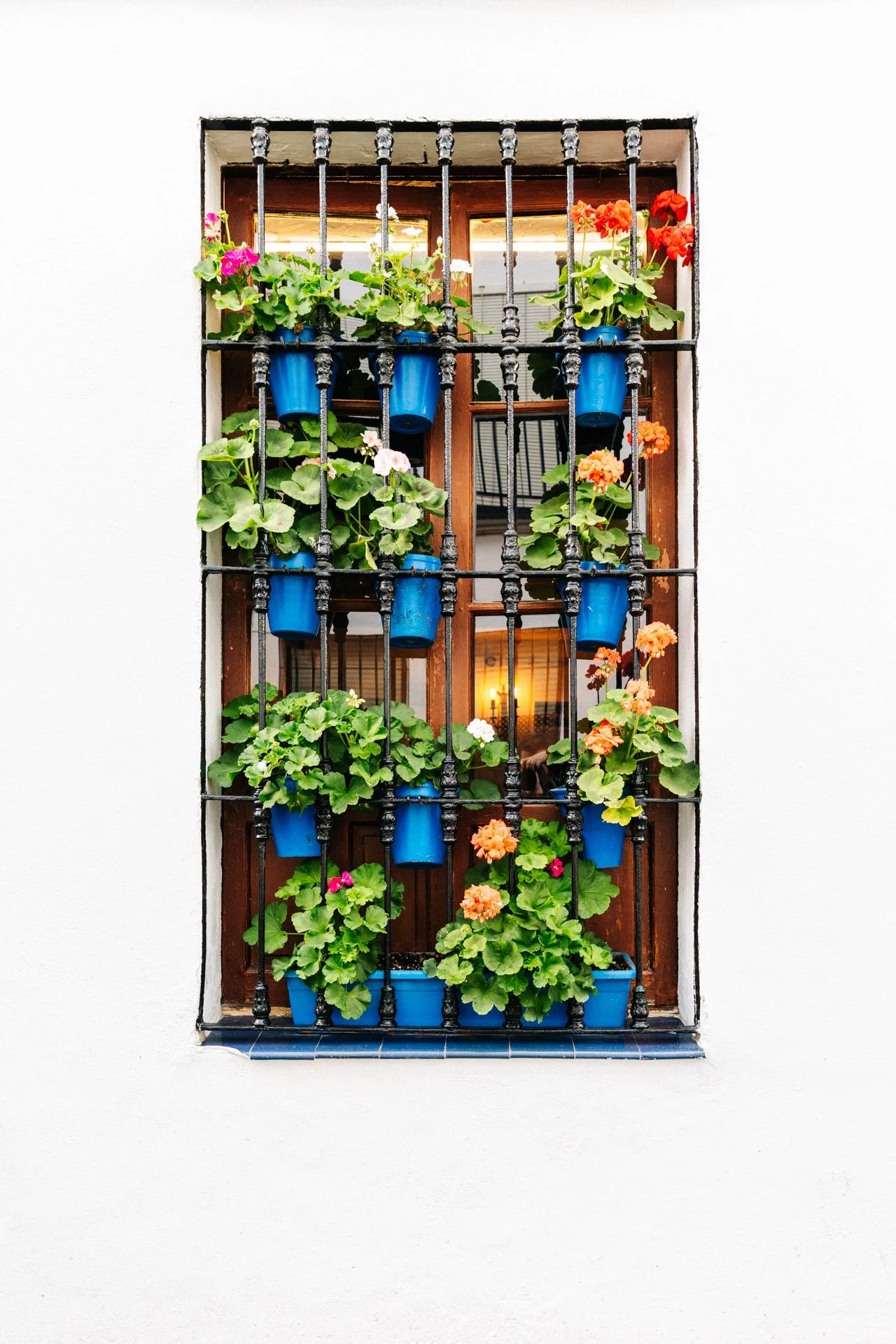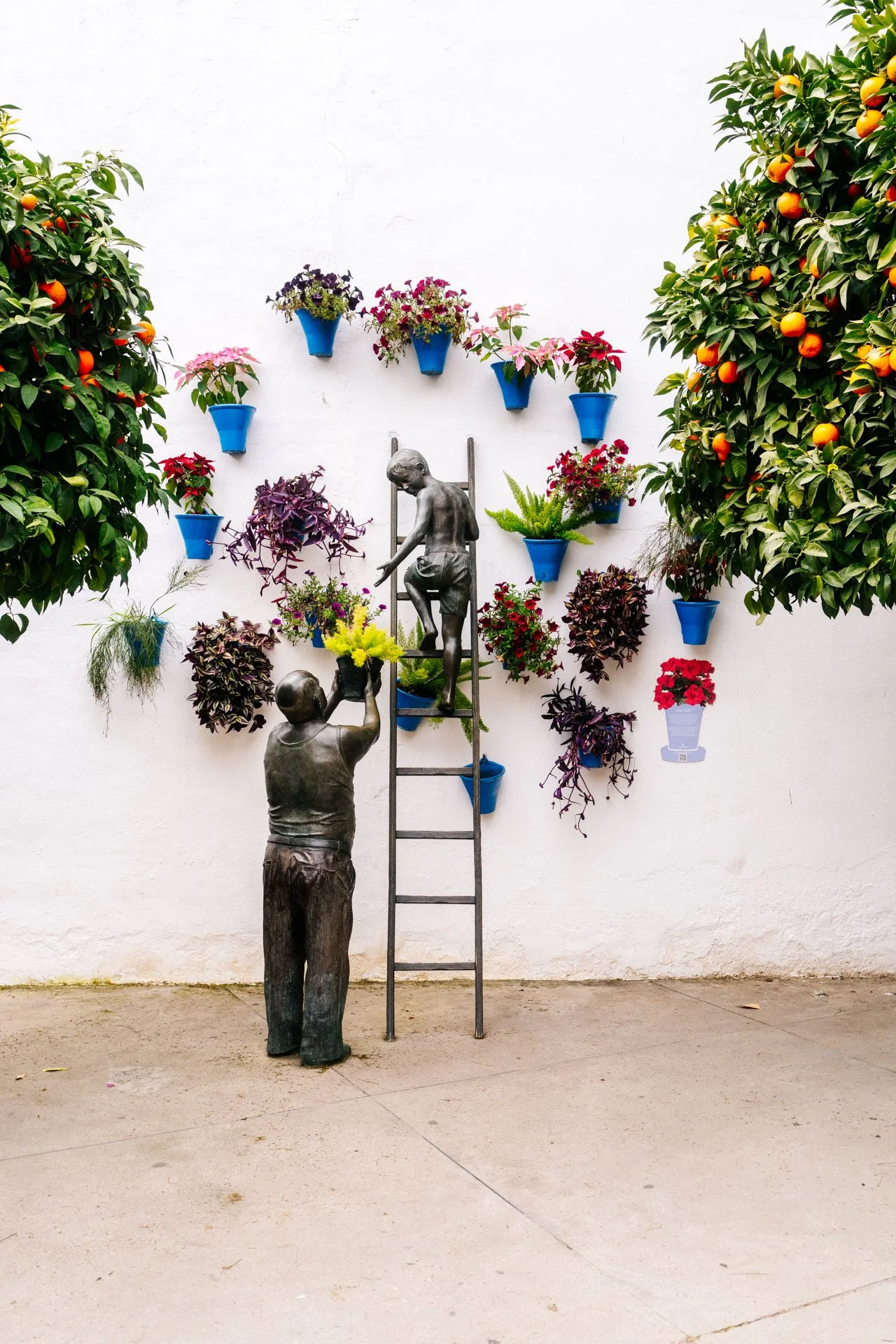Photography Walks: Capturing the Spirit of Córdoba with Your Camera
Have you ever wanted to capture a city where history and modern life intertwine around every corner?
Córdoba, a historic city in southern Spain, is known for its rich cultural heritage. Once the capital of the Islamic Caliphate in the Middle Ages, it boasts iconic landmarks like the Mezquita-Catedral, the Roman Bridge, and charming whitewashed patios filled with flowers.
It’s a place where the past and present blend seamlessly, offering photographers endless opportunities. The cobblestone streets, Islamic and Christian architecture, and vibrant everyday life make Córdoba a perfect destination for travel, documentary, and street photography.
Here are some key details to help plan your visit with your camera in hand:
Best time for photography
Spring (April-May) is ideal, awith courtyards bursting with flowers and the perfect light for capturing stunning shots. Fall (September-November) brings milder temperatures and a golden, photogenic light. Try to avoid summer, as temperatures can easily exceed 40ºC. In my case, I visited in January, which, although a bit cold, falls during the off-peak tourist season, offering a quieter experience.
How long to stay
To fully enjoy Córdoba at a leisurely pace and capture its best corners, a visit of 2 to 3 days is ideal. In one day, you can visit the main monuments, but with more time, you'll be able to explore its neighborhoods, savor the local cuisine, and make the most of the best lighting for photography.
How to get there and getting around the city
Córdoba is well-connected by high-speed train (AVE) from Madrid, Sevilla, and Málaga. The city is compact and perfect for walking, but if you plan to explore its narrow alleyways and hidden courtyards, be sure to bring light gear.
What to eat
Córdoba's cuisine offers a taste of the city's rich culinary heritage, featuring iconic dishes like:
• Salmorejo: A cold, creamy blend of tomato, bread, garlic, and olive oil—perfect for summer.
• Flamenquín: A roll of ham and cheese, breaded and fried—an absolute classic from Córdoba.
• Rabo de toro (oxtail stew): A traditional stew, rich in flavor with tender, fall-off-the-bone meat.
• Berenjenas con miel (eggplant with honey): A delightful sweet-salty contrast for food lovers.
Photography
Córdoba is a popular tourist destination, so locals are accustomed to seeing people take photos—no need to worry. The city offers endless photography opportunities, but here are a few standout spots:
Mezquita-Catedral of Córdoba
The Mezquita-Catedral of Córdoba is one of the city’s most impressive landmarks and a dream for any photographer. Inside, the characteristic horseshoe arches create a mesmerizing play of light and shadows. Take your time to capture the intricate architectural details, experiment with the symmetry of its interior arches, and soak in the serene atmosphere and majesty of the temple.
Puente Romano
The Roman Bridge of Córdoba offers stunning photography opportunities, especially at sunrise and sunset, when the warm light enhances its historic beauty. Framing the bridge with the reflections on the Guadalquivir River or capturing the contrast between its ancient architecture and the modern city skyline creates visually striking compositions.
Barrio de San Basilio and Los Patios Cordobeses
If you visit in spring, the flower-filled courtyards of this neighborhood offer a visual feast. Even outside of season, the charming architecture and colorful doors provide plenty of interesting compositions.
Calleja de las Flores
One of the most photographed streets in Córdoba, this alley adorned with geranium pots offers a unique perspective of the city. To avoid the crowds, wake up early and capture the street's peaceful essence at dawn. You’ll get a one-of-a-kind composition with the Mosque Tower in the background.
Plaza de la Corredera
With its vibrant colors and rectangular architecture, this square is perfect for capturing the essence of local life. From terraces bustling with people to the play of light and shadow between the arches, there are countless opportunities for urban photography here.
Bonus spot: The Faculty of Philosophy and Letters of Córdoba University
Nestled in the heart of Córdoba’s historic center, the Faculty of Philosophy and Letters occupies an 18th-century building that once served as a hospital. As you wander through its corridors, you may notice faded signatures and initials carved into the wooden windows on the second floor—remnants from former patients. This building is also known for its eerie stories of paranormal activity, making it an intriguing location for anyone looking to capture a bit of mystery with their camera.
These are just a few of the many charming spots you can discover in Córdoba. I highly encourage you to visit and immerse yourself in the city’s history-filled streets. To make your journey even easier, I’ve included a map with the best photography locations, along with recommendations for restaurants and other points of interest.











Córdoba is a fantastic destination for travel photography, with its rich history, stunning architecture, and vibrant streets just waiting to be captured. Have you visited Córdoba or do you plan to? Share your favorite photography spots and tips in the comments—I’d love to hear about your experience!






















